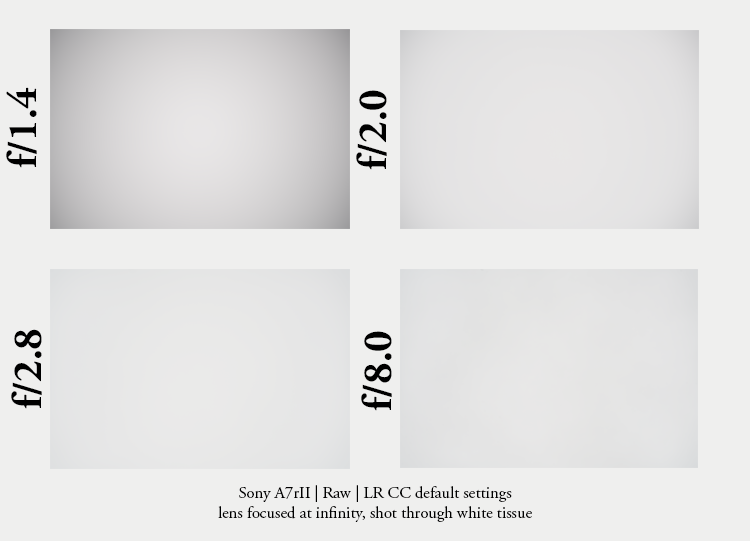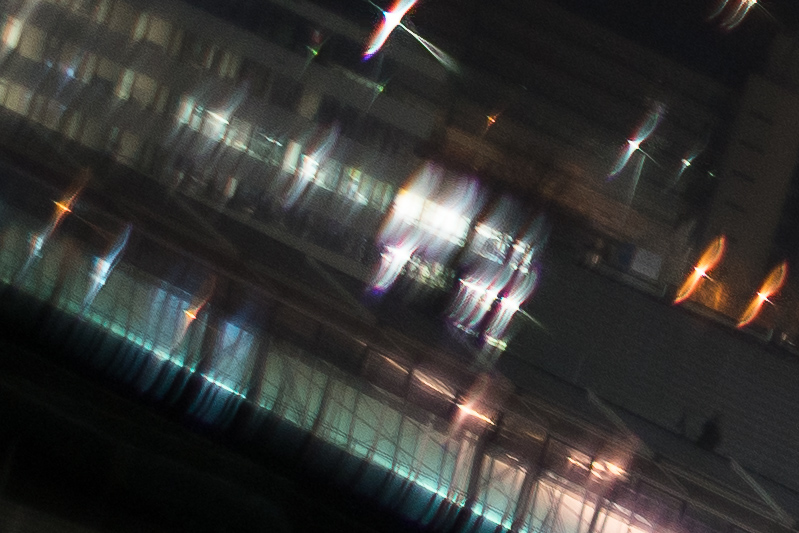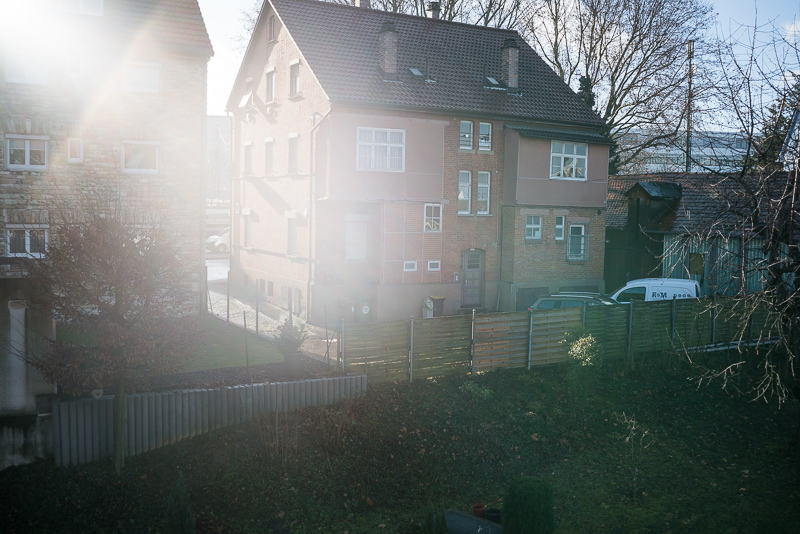Introduction

In many of our lens reviews we talk about certain kinds of aberrations, so this article shall give you an overview of typical lens aberrations, tell you in what lenses to encounter them and how to cope with them.
We may publish another article in the future that will go further into detail, not only naming the aberrations, but talking about what causes them.
Distortion
Description: Straight lines in the picture are not straight but curved or bent.
Common problem in: zoom lenses and wide angle primes
Solution: “uniform” barrel or pincushion distortion can be easily corrected. For complex/wavy distortion though, lens correction profiles are mandatory, but not every correction profile works perfectly at every focusing distance.
Trivia: for today’s digital photography many lens manufacturers decided to correct this in post processing
Field curvature

Description: When you shoot a flat scene there is a dip in resolution/contrast in a part of the frame, e.g. the midframe area or the corners. In the example above you can see a lens that has higher corner resolution than midframe resolution.
Common problem in: wide angle lenses, some fast lenses
Solution: stopping down will usually reduce the field curvature. With some lenses focusing on the midframe instead of the center can also improve results.
Trivia: usually a big problem when using small rangefinder wide angle lenses on a Sony camera.
Vignetting
Light Falloff

Description: Lower exposure in the corners compared to the center of the frame.
Common problem in: wide angle lenses, fast lenses
Solution: with most lenses stopping down will reduce the light falloff (with very small lenses there are sometimes only minor improvements)
Corner exposure can be lifted in post processing e.g. in Lightroom. For common lenses there are profiles available. Correcting this in post can lead to increased noise in the corners!
Trivia: back in the film days you could buy center filters to reduce the light falloff of your wide angle lenses.
Optical Vignetting

Description: the shape of out of focus light circles deteoriates towards the corners of the frame, so instead of circles you see shapes that resemble cat’s eyes.
Common problem in: (small) fast lenses
Solution: none (except for maybe buying a lens where this is less pronounced)
Stopping down you will eventually get a perfect circle at some point, but then you are shooting at e.g. f/2.8 instead of f/1.4.
Trivia: also often referred to as “mechanical vignetting”
Color Cast
Description: The corners of the frame take on a different color than the rest of the frame.
Common problem in: small wide angle lenses, especially mirrorless/rangefinder designs
Solution: correct it with the third party software “corner fix” or use gradients in Lightroom
Trivia: this is not exactly a lens aberration but rather the inability of digital sensors to capture light that hits them at a very acute angle.
Spherical Aberration
Description:
undercorrection: loss of contrast and resolution (“glow”) across the whole frame
overcorrection: harsh bokeh with severe outlining
Common problem in: fast lenses (especially old ones) at maximum aperture
Solution: stopping the lens down by 1 stop usually makes a big difference
Trivia: for portraits a bit of undercorrected spherical aberration can be beneficial to give a smoother look
Chromatic Aberrations
Lateral CA
Crop from corner region of the frame
Description: the different color channels show different distortion patterns. Usually this leads to outlining on edges of high contrast that gets stronger the farther you move away from the center.
Common problem in: wide angle lenses, older tele lenses without ED elements, most zoom lenses.
Solution: in most cases this can be losslessly corrected in post. Stopping down does not make a difference to this aberration.
Trivia: Some symmetrical lenses show zero lateral CA.
Longitudinal CA
Description: Longitudinal chromatic aberrations come in different forms where the most common are purple fringing (it shows up close to the plane in focus) and the “bokeh-CA” or “bokeh fringing” which you will see in the out of focus areas.
Common problem in: fast lenses
Solution: stopping the lens down will reduce this. You can also try to correct it in post, but this will not always work well enough.
Trivia: Some lenses that carry an “APO”-tag are perfectly corrected for this aberration and won’t show any colorful outlining at all.
Coma

Description: small point light sources in the corners of the frame are not rendered as points but take on weird shapes instead.
Common problem in: fast wide angle lenses
Solution: stopping the lens down will reduce this
Trivia: if you are into astrophotography you should care about good coma correction.
Astigmatism

Description: away from the center structures show double edges which are either radially or tangentially oriented.
Common problem in: fast lenses, wide angle lenses
Solution: usually improves on stopping down.
Trivia: it can be difficult to distinguish between astigmatism and coma.
Focus Shift
Description: When you stop a lens down the plane of optimal focus shifts to the front or the back.
Common problem in: fast lenses
Solution: first stop the lens down and then focus. Often it also helps to just use f/8.0 to f/11 for this not to be a problem anymore.
Trivia: classic Sonnar lenses are known to show a notorious amount of focus shift.
Onion ring bokeh
Description: out of focus light circles show onion-ring-like patterns.
Common problem in: some fast lenses with aspherical elements
Solution: none except for buying a lens without these issues.
Flare resistance
Ghosting


Description: colorful artifacts (circles, crescents) in the frame
Common problem in: wide angle lenses, zoom lenses, lenses with high element count and big front elements
Solution: stopping down may change the shape and size of the artifacts. Slight reframing can sometimes help as well.
Internal reflections

Description: ring-like aberration (see picture)
Common problem in: a few very fast wide to normal lenses
Solution: stopping down can sometimes help here
Veiling flare

Description: almost the whole frame is covered by a veil of light that takes away most of the contrast
Common problem in: most severe in tele lenses
Solution: sometimes using the hood can help a bit
Further Reading
My name is Bastian and for many years I have been mostly shooting Nikon DSLRs. As of today I have made my transition from Nikon to Sony and I am mainly using small but capable manual lenses. My passion is landscape photography but I also like to delve into other subjects from time to time.
from Hacker News https://ift.tt/3bO4J15
No comments:
Post a Comment
Note: Only a member of this blog may post a comment.